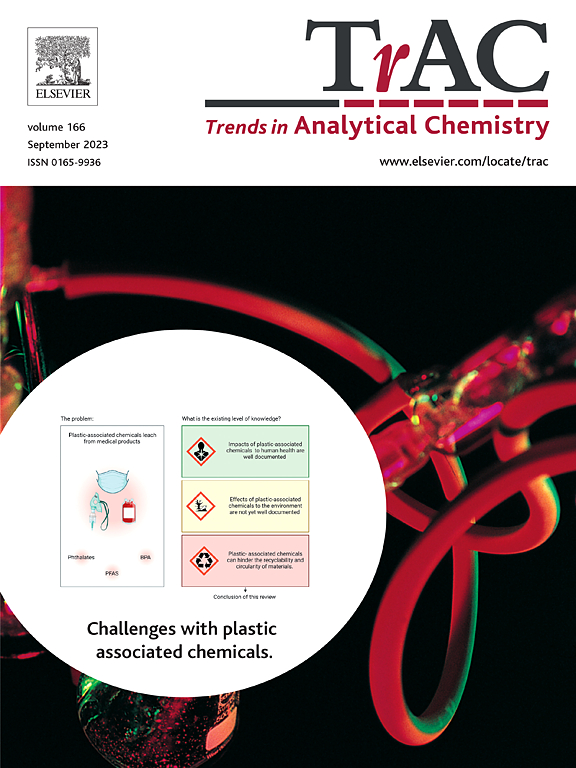Key insights into microplastic pollution in agricultural soils: A comprehensive review of worldwide trends, sources, distribution, characteristics and analytical approaches
IF 11.8
1区 化学
Q1 CHEMISTRY, ANALYTICAL
引用次数: 0
Abstract
Microplastics in agricultural ecosystems have gained recent attention due to their widespread prevalence and the reported impacts. The current study reviews close to 90 relevant publications. Seventy studies were selected using ResNetBot, a tool designed to identify key works based on their significance to other studies matching the search criteria. The selection focused on global occurrence of microplastics within agricultural landscapes, emphasizing their distribution, origins, concentrations, morphology, color, polymer types, dimensions, vertical distribution, and the implications of land use. Furthermore, this study included predominant methodologies for extracting, identifying, and characterizing microplastics. Plastic mulch films represent the primary source of input, accompanied by sewage sludge, biosolids, irrigation water (notably wastewater), atmospheric deposition, and polymer-coated fertilizers, among others. Concentrations exhibit considerable variability, ranging from a few particles/kg in low-input regions to exceeding 80,000 particles/kg in areas subjected to prolonged mulching practices. Polyethylene and polypropylene are the most frequently encountered polymers, while fragments, fibers, and films are predominant forms, with films strongly linked to mulching and fibers typically associated with biosolid applications. Transparent/white and black particles are predominant, reflecting the materials commonly utilized in film applications. Microplastic concentrations generally decrease with soil depth; however, smaller particles penetrate deeper soil layers. Intensive agricultural practices demonstrate significantly elevated microplastic loads in comparison to less intensive or natural ecosystems. Density separation methods (commonly utilizing NaCl) followed by digestion processes (often employing H2O2) are standard practices for isolating microplastics while spectroscopic methodologies (including FTIR/μ-FTIR and Raman spectroscopy) are essential for verifying polymer composition and ensuring precise identification.
求助全文
约1分钟内获得全文
求助全文
来源期刊

Trends in Analytical Chemistry
化学-分析化学
CiteScore
20.00
自引率
4.60%
发文量
257
审稿时长
3.4 months
期刊介绍:
TrAC publishes succinct and critical overviews of recent advancements in analytical chemistry, designed to assist analytical chemists and other users of analytical techniques. These reviews offer excellent, up-to-date, and timely coverage of various topics within analytical chemistry. Encompassing areas such as analytical instrumentation, biomedical analysis, biomolecular analysis, biosensors, chemical analysis, chemometrics, clinical chemistry, drug discovery, environmental analysis and monitoring, food analysis, forensic science, laboratory automation, materials science, metabolomics, pesticide-residue analysis, pharmaceutical analysis, proteomics, surface science, and water analysis and monitoring, these critical reviews provide comprehensive insights for practitioners in the field.
 求助内容:
求助内容: 应助结果提醒方式:
应助结果提醒方式:


